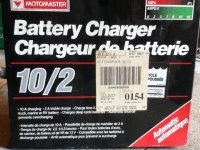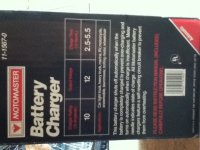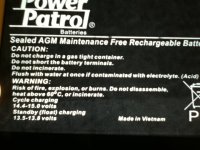Today I charged both of my lead acid batteries individually. I had it on the 2 amp setting. When they were fully charged the green light came on and the needle was at 100% charged. I measured the voltage before charging with an analog DC meter and it was 12ish and post-charge it was 13ish. The one I've been testing stuff with took longer to charge, which tells me somethings working properly.
Also on my charger, there is only one meter and the amp gauge is the same as the charge indicator. So if you look at the pictures of the charger in a previous comment, you'll see how it looks. I noticed a strange thing happen though. When green LED came on indicating a full charge, I left for a minute and when I came back the green light was off and the gauge showed the needle a tiny bit away from 100%. I watched for about 30 seconds and then the green LED came back on. I kept watching this time, and after about a minute the green light turned off and the needle swung down to 50% and then you could see it moving and it took a few seconds and went back to 100% and green light. At this point I disconnected the battery (just because I was cleaning up, not because anything was wrong) but I assume it would have kept going through this cycle of saying charged and then the green light turning off and back on.
Is this phenomenon common? Is it my "sort of smart" charger's way of maintaining a float charge, by turning off an on or something? This is also my first time charging these batteries so could this be something to do with the characteristics of lead acid batteries and how they need to be charged a few times before they can hold their full capacity?
Unfortunately since my bike is incomplete (waiting for the speed controller to ship) I have no way of running my batteries and charging them a few times. Because if I run the bike 20km or so until it is noticeably lower power, and charge the batteries, and go through this cycle a few times, I'd know that obviously the batteries are getting power from somewhere. But like I said, I am unable to do that with an incomplete bike. As a matter of fact, the bike is in a repair shop getting a new crank so it's gone until friday.
Also about those "dumb" chargers that are older than me, that hardly sounds like a charger

more like a 12v power supply with an ammeter!




